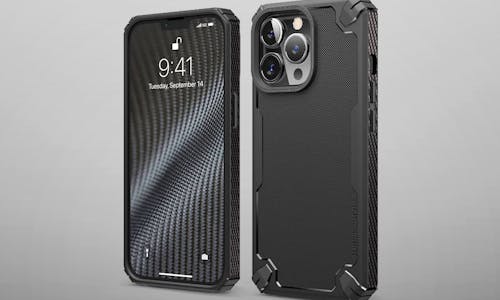Now that we’ve tested both Apple’s new iPhone 6s and Sony’s Xperia Z5 we’re going to help you decide which one is a better fit.
Design
If you’re at all familiar with the iPhone 6, the 6s boasts essentially the same externals. Apple’s been smart about the refinements it’s made to the phone’s design, primarily by strengthening the metal frame through the use of a new 7000 series aluminium and by giving the internal structure thicker, Bendgate-resistant walls.
Beyond that the phone is a touch bigger in all directions, but not by any amount that’ll render current iPhone 6 accessories (such as cases) incompatible and there’s a new rose gold colour option, bringing your choices to four.
The Xperia Z5 also comes in four colourways, but in place an aluminium back with those unsightly antenna break lines you’re offered a frosted glass pane that’s significantly more fingerprint-resistant than the Xperia Z3/Z3+. It’s arguably better looking than the iPhone’s back but also prone to cracking – and we’re not the only one’s that have seen this fault appearing pretty early on.

The Z5 features a more square design and a single flap along the side of its metal frame for a SIM card and microSD expandability. The most impressive aspect of the phone’s design is that Sony has given the handset an exposed headphone jack and microUSB port whilst retaining IP68-certified dust and waterproofing.
Screen
The larger, heavier phone technically packs the bigger, better display too; a 5.2-inch Full HD Triluminos panel that offers up slightly more vibrant imagery, which works well for videos and gaming.
However the iPhone’s Retina HD panel still has great overall brightness and some of the best viewing angles in the business, even if the resolution is noticeably lower and contrast a touch weaker.
The other big draw for the 6s is a new technology of Apple’s own design called 3D Touch, which manifests itself as an additional layer of sensors behind the touchscreen that can measure the force of your presses into the display.
OS
By now most people know what it’s like to use an iOS device, with its clean, clear iconography and slick interface. The 6s runs iOS 9 which adds a few new elements into the mix such as Siri Suggestions, but 3D Touch is the biggest new feature. It lets you press into app icons for faster access to specific features or for previewing and opening emails and web links with ‘peek and pop’.
The improvements Sony’s made to its Android 5.1-based UI are no less impressive either. It’s cleaned up the apps drawer, cut down on how many first-party apps come pre-loaded (something Apple should consider doing) and retained handy extras like widgets and small apps for added convenience and more advanced multitasking.
Performance
The Z5 is fast, thanks to the Qualcomm Snapdragon 810 processor inside, but in general usage, the 6s feels that little bit snappier. There’s a new 1.8GHz dual-core A9 chip inside paired to 2GB of RAM, which is a notable step up over older iPhones. The speed is most obvious in the hyper-responsive fingerprint sensor and the incredibly rapid camera shutter.
Intensive 3D gaming is pretty solid whichever device you choose, but the 810 in the Z5 does get hot, even if it doesn’t overheat as readily as the rumours make out.

The other side of the coin is battery life and the larger 2900mAh in the Sony wins this battle hands-down. You can expect around a day and a half to two days of use per charge, whilst Apple’s new iPhone struggles to last a full day, which might be partly down to the fact that it actually uses a smaller 1715mAh battery than last year’s 6.
Neither phone supports wireless charging, but the Z5 does get the benefits of Qualcomm’s QuickCharge technology, whilst you’ll have to Macgyver an iPad adapter if you want to juice your 6s up faster.
Cameras
If you dig down, the fact that the Sony actually supplies Apple with its camera sensors should make them the masters of their domain, but the 6s puts up a seriously tough fight on a number of fronts.
First up this is the first iPhone with a double-digital sensor, capable of capturing 12-megapixel stills and finally, 4K video. It’s fast to focus and as we already mentioned it’s fast to fire too. Snapping a selfie in low light is better as well, not just because of the 5-meg front facer, but the Retina flash that evens out skin tones by using the screen in low light.

You get a megapixel bump on the Z5 too, 5.1 on the front, although flashless, but a mammoth 23-megapixel rear sensor. It, like the iPhone packs an exceptional smartphone camera, particularly thanks to impressive image stability, greater low light performance and manual controls – something the iPhone has always lacked.
The trade-off is that you have to work a little harder to get a better shot, whilst the iPhone will be the preferred option for those who simply want to point and shoot.
Verdict
The Sony Xperia Z5 starts out a touch more expensive than the base iPhone 6s, but for that you do get twice the amount of internal storage and room to expand by up to an additional 200GB.

If you’re not worried about space, the iPhone is a more fist-friendly device, with great all-round performance and a slicker user experience. Early adopters will benefit more from falling into the iOS camp too, whilst creatives will favour the Z5 for its waterproofing, longer battery life and deep camera experience.











Leave a Reply